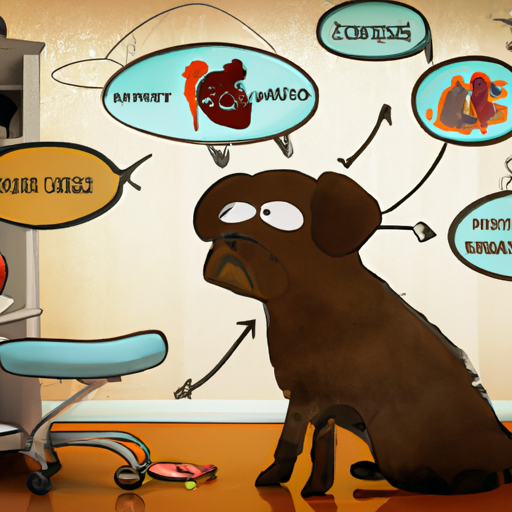Kidney failure, also known as renal failure, is a serious health condition that can affect your beloved canine friend. Acting as your dog’s personal health advocate, it’s crucial to understand and recognize the signs of kidney failure. This could make all the difference in your dog’s life, ensuring early detection and intervention.
Recognizing the Symptoms
The symptoms of kidney failure in dogs can be subtle and may not appear until the disease has advanced. It’s your responsibility as a caregiver to be vigilant. Here are some common signs that your dog might be suffering from kidney failure:
- Decreased appetite and weight loss: Your dog might lose interest in food or even stop eating altogether.
- Vomiting and diarrhea: These are common symptoms in dogs with kidney failure.
- Bad breath and oral ulcers: Dogs with kidney failure often have ammonia-like breath.
- Lethargy and depression: Your dog may seem less energetic or show signs of depression.
- Frequent urination and increased thirst: Kidney failure can disrupt your dog’s ability to concentrate urine, leading to increased drinking and urination.
Understanding the Causes
There are numerous potential causes of kidney failure in dogs. It’s important to understand these causes so you can take preventative measures. Here are a few known causes:
- Age: Kidney failure is more common in older dogs.
- Certain medications: Some medications can potentially damage the kidneys.
- Toxins: Certain toxins, including some types of plants and antifreeze, can cause kidney failure.
- Underlying health conditions: Conditions like diabetes and high blood pressure can contribute to kidney failure.
How is Kidney Failure Diagnosed?
A diagnosis of kidney failure is typically made through a combination of physical examination, blood tests, urine tests, and sometimes imaging studies like X-rays or ultrasound. The table below summarizes some of the common diagnostic tests:
| Test | Purpose |
|---|---|
| Physical Examination | To check for signs like weight loss, dehydration, or pain in the kidney area |
| Blood Test | To measure waste products in the blood |
| Urine Test | To evaluate the kidneys’ ability to concentrate urine |
| Imaging Studies | To identify any abnormalities in the kidney structure |
Managing Kidney Failure in Dogs
If your dog is diagnosed with kidney failure, treatment will aim to manage the symptoms and slow the progression of the disease. This can include:
- Dietary changes: A low-protein, low-phosphorus diet can help reduce the kidneys’ workload.
- Fluid therapy: This can help flush out toxins from the body.
- Medications: Certain medications can help manage symptoms like high blood pressure and vomiting.
Remember, every dog is unique and treatment should be tailored to their specific needs.
FAQ’s
1. Can kidney failure in dogs be cured?
Unfortunately, chronic kidney failure is not curable. However, with appropriate management, it is possible to slow the progression of the disease and improve quality of life.
2. How long can a dog live with kidney failure?
This varies greatly depending on the stage of the disease at diagnosis and the dog’s overall health. Some dogs can live for years with appropriate management.
3. Can a dog’s diet contribute to kidney failure?
Yes, a diet high in protein and phosphorus can put extra stress on the kidneys. A specific renal diet is often recommended for dogs with kidney failure.
4. Is kidney failure painful for dogs?
Kidney failure itself is not typically painful, but it can lead to discomfort due to associated symptoms like nausea and a general feeling of illness.
5. What breed of dogs are more prone to kidney failure?
While any breed can develop kidney failure, some breeds like English Cocker Spaniels and Bull Terriers have a higher genetic predisposition to certain types of kidney disease.
Remember, your dog relies on you for their well-being. By recognizing the signs of kidney failure and seeking prompt veterinary care, you can provide the best possible life for your canine friend.



